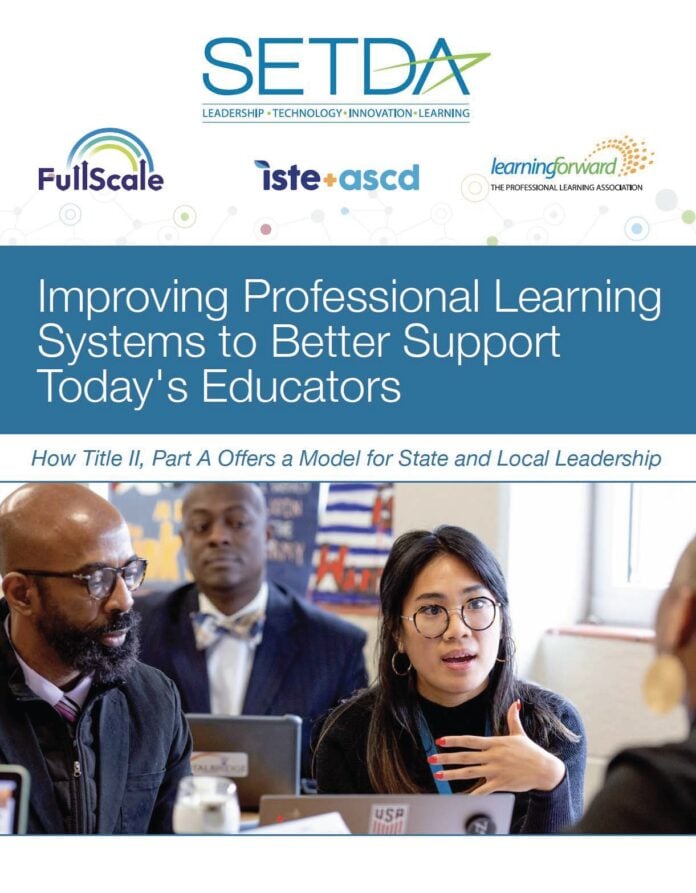The rapid advancement of AI in classrooms is highlighting a critical gap: the “digital design divide” – the difference between educators who are well-supported in using technology to create engaging learning experiences and those who are not. This article outlines strategies for state and local leaders to close this gap and invest in sustainable professional learning (PL) initiatives. Based on research from SETDA, in partnership with FullScale, ISTE+ASCD, and Learning Forward, it provides practical guidance for leveraging resources and fostering a more equitable and effective learning environment for all educators.
Understanding the Current Landscape: Key Findings
Recent research reveals persistent challenges in how states and districts utilize Title II-A funding, the primary federal program supporting K-12 educator professional learning. These include:
- Inconsistent Definitions of Quality: While leaders generally envision technology deepening and accelerating learning, few have clear definitions of what this looks like in practice or how PL can effectively support edtech integration.
- Short-Term Focus on Tool Training: Spending often concentrates on one-off training sessions for specific platforms, addressing immediate needs but failing to build durable educator capacity in a rapidly evolving technological landscape.
- Tracking Without Systemic Improvement: While LEAs track data, this data isn’s always used to inform practice, understand impact, or improve programs. SEAs acknowledge their monitoring focuses on compliance, not on using evidence to refine strategy.
- Lack of Documented Models: While leaders recognize the value of coaching, PLCs, and inquiry cycles, they often struggle to identify specific, well-documented programs demonstrating success.
Building Coherent Local PL Systems: Practical Strategies
Addressing these gaps requires deliberate action by state and local leaders. The guide identifies five key strategies for building sustainable and impactful PL systems:
- Diversify Funding Sources: Avoid reliance on Title II-A alone. “Braiding” funds from various sources (Title II-A, Title IV-A, Perkins, state/local funding, partnerships) creates more stable systems.
- Build Cross-Functional Teams: Involve stakeholders from edtech, curriculum, assessment, student support, and equity to ensure PL addresses the full scope of instructional needs.
- Anchor PL in Long-Term Outcomes: Shift away from tool-specific training and focus on evidence-based frameworks and research-backed instructional models, enabling teachers to adapt to evolving technology while maintaining student-centered learning.
- Invest in Sustainable Support: One-off training is insufficient. Sustained support like coaching, peer learning, and leadership pipelines are essential for lasting change.
- Data-Driven Planning: Use accurate data about teacher needs, student outcomes, and previous training to inform PL design and ensure investments are effective.
Pennsylvania’s Intermediate Unit 13 provides an example of this approach. They offer sustained PL anchored in the state’s Student-Centered Learning Blueprint, rather than focusing on specific devices. Workshops and coaching explore personalized learning, UDL, and formative assessment, with technology integrated as a tool to advance these practices.
How State Education Agencies (SEAs) Can Drive Systemic Change
While local education agencies (LEAs) are primarily responsible for PL, SEAs play a crucial role in setting the conditions for success. Key strategies include:
- Align Funding With Instructional Priorities: Ensure Title II-A and other PL funds support shared definitions of high-quality, technology-integrated instruction.
- Define and Promote Aligned Visions: Develop statewide definitions of high-quality, technology-integrated instruction to combat fragmented, tool-focused PL.
- Leverage Compliance for Improvement: Design monitoring systems that serve as continuous improvement tools, leveraging required data collection to inform strategic PL investments.
- Encourage Sustainable Models: Promote durable models like coaching, PLCs, and job-embedded inquiry to foster lasting changes in practice.
- Document and Scale Success: Create a system to document, highlight, and share examples of high-quality PL focused on effective technology integration.
- Break Down Silos: Integrate edtech and instructional leadership teams to ensure technology integration is embedded in all major instructional initiatives.
The Wyoming Department of Education’s Innovator Network exemplifies this approach. They’ve integrated PL and compliance into a single, continuous improvement process, utilizing Canvas for asynchronous PL offerings aligned with state priorities. LEAs document PL activities and share evidence of impact for future statewide support.
Responding to the Moment: Focusing on Educator Needs
Across the country, educators are creating more meaningful and technology-integrated learning experiences for students, including through the use of AI. Addressing the digital design divide and harnessing the potential of AI requires sustained investment in PL structures that equip every educator with the skills, confidence, and support to integrate technology in student-centered, instructionally powerful ways.
Ji Soo Song is the Director of Projects and Initiatives at SETDA, focusing on state education agencies implementing promising practices in areas like digital opportunity, edtech procurement, professional learning, sustainability, and AI. He leads partnerships with philanthropic groups and corporate sponsors and advises on federal advocacy strategies.






















